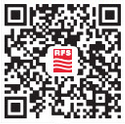Case study: Navigating logistical challenges to deliver DVB-T2 in Poland
Overview
In June 2022, Poland completed the last stage of its DVB-T2 standard roll-out. Rather than a change from DVB-T, this new standard builds on existing technology, introducing additional facilities and features to meet the evolving needs of the market. The two technologies are intended to co-exist for several years and as such introducing the infrastructure needed to support DVB-T2 is not a case of rip-and-replace. Instead, broadcasters needed to introduce infrastructure that can serve both standards without significantly expanding site footprints, and do so while navigating the global logistical challenges facing all industries.
Deployment
RFS has a long history of working with broadcasters on shifting TV standards, most recently in the US on its repack and shift to ATSC3.0. The result is a deep understanding of the need to futureproof equipment, allowing it to evolve and serve broadcasters over the longest period possible, and also how to tackle installation to ensure minimal disruption. For the DVB-T2 roll out in Poland RFS has provided multiple PHP panel arrays customized for optimum coverage and performance, along with numerous RD Series slot antennas. The RD Series antennas feature the lowest wind loading, ice loading and tower loading with respect to any panel array offering an equivalent radiation pattern. The lightweight and compact construction minimizes installation effort and maximizes tower space. Several pattern options are available making the RD Series antennas a cost-efficient solution and a perfect fit for the SFN networks and Gap Filler sites.
In addition to the technology itself, RFS also ensured the smoothest possible roll out by making the most of its Hannover facility for broadcast antenna assembly. Previously located in the UK, RFS made the decision to move its broadcast assembly to better serve broadcasters upgrading the infrastructure across Europe, including Poland. This minimized the potential logistical challenges involved with delivering equipment ensuring all deployments were delivered and installed on time.
Conclusion
The entire project saw RFS deliver the antenna and transmission line equipment in a time frame of less than 12 months to over 60 sites serving millions of viewers across the entire country. Despite global logistical challenges being faced by countries across the world and the ongoing impact of the pandemic, RFS delivered all equipment on time, meeting the needs of broadcasters as they undertook the complex and challenging task of rolling out DVB-T2 as a way of ensuring they meet the needs of consumers both now and in the future.
If you would like to hear more about the project with broadcasters in Poland, please get in touch: tomasz.borodo@rfsworld.com


